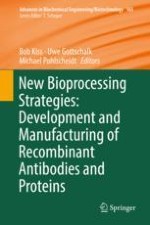2018 | OriginalPaper | Buchkapitel
Fully Disposable Manufacturing Concepts for Clinical and Commercial Manufacturing and Ballroom Concepts
verfasst von : Berthold Boedeker, Adam Goldstein, Ekta Mahajan
Erschienen in: New Bioprocessing Strategies: Development and Manufacturing of Recombinant Antibodies and Proteins
Aktivieren Sie unsere intelligente Suche, um passende Fachinhalte oder Patente zu finden.
Wählen Sie Textabschnitte aus um mit Künstlicher Intelligenz passenden Patente zu finden. powered by
Markieren Sie Textabschnitte, um KI-gestützt weitere passende Inhalte zu finden. powered by
